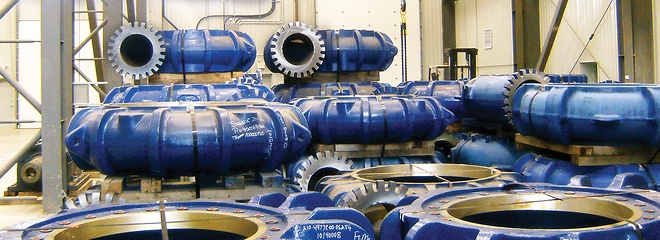Spring Update: Better Processes Mean a Better GIW

This spring, we’re looking forward to a more optimistic market and a new list of priorities at GIW Industries Inc. This contrasts the last year, in which we almost exclusively focused on cost control.
While operating during three years of a down market, we really had to learn to trust our business and our actions. We reduced inventory by 33%, made tremendous cost savings by negotiating with vendors, and even saved $300,000 simply by changing how we handle scrap materials.
Many of these savings are thanks to SAP because we’re now able to see things we’ve never seen before. And now that we’ve learned how to manage business on a very tight string, we’re transitioning into using SAP to further improve our processes.
That’s our primary goal in the coming months: Make our processes more reliable, more accountable, and as cost-effective as possible. If we have better processes in place, we’ll be a stronger company — and the stronger we are as a company, the better we can serve our customers long term.
Of course, getting here was easier said than done.
Encouraging open communication
Running SAP is like running a high-tuned racing car: You can go places very quickly, but if you don’t know what you’re doing, you can also run into a ditch very rapidly! Similarly, if people don’t follow prearranged processes through SAP, it’s not going to work.
Before, every team at GIW could afford to work in a silo, but that’s no longer the case with SAP. When anyone puts data into the system, it affects the entire company. Without open communication, it can create chaos.
For example, on-time delivery needs improvement. We’ve started implementing a new process, but we’re still working on it because project management needs input from all areas — engineering, product development, production, scheduling, and so on.
It takes longer to develop a process any time you have a group of people this large, but the solutions are better because everyone buys in. This is the best practice to get to a true root cause, get buy-in to change processes, and solve issues — and it’s a practice you’ll see us implementing daily.
For instance, we have a Key Milestone Chart for every project to help us make sure all our teams are in alignment. We also have weekly Customer Voice meetings with representatives from across the company to ensure we resolve any customer issues and they don’t happen again. And, of course, there’s ongoing SAP training, which is our main catalyst for connectivity.

Ready for the future
SAP is propelling us into the future. Without this structured system, I firmly believe we wouldn’t be able to go over the next hump in our company growth.
Once we have a greater understanding of this system and better processes in place, we’re going to be so much stronger. On-time delivery performances will be better, we’ll be more responsive, we’ll be able to do more with less, and we’ll have fully integrated systems. There are a lot of benefits, and we’re already starting to see them slowly fall into place.
That being said, the expectation isn’t for perfection: Part of developing new processes is understanding that things always have potential to go wrong. If we can figure out what’s wrong as soon as possible and identify impacts, we can try to mitigate expectations.
Changes like these aren’t going to happen overnight; learning the purpose behind SAP and how it works takes a culture shift. It created a new level of accountability and responsibility, and it’s something everyone is still getting used to.
However, the future is bright! We know what the challenges are and what we need to do moving forward. This spring, we’ll be integrating all the GIW teams closer to our production scheduling teams to make sure things go smoothly while also looking for opportunities to reduce costs. And as we continue developing process improvements, more open communication, and visibility, rest assured that we’re simultaneously setting ourselves up for long-term success.
Thomas Mueller
Vice President of Operations

